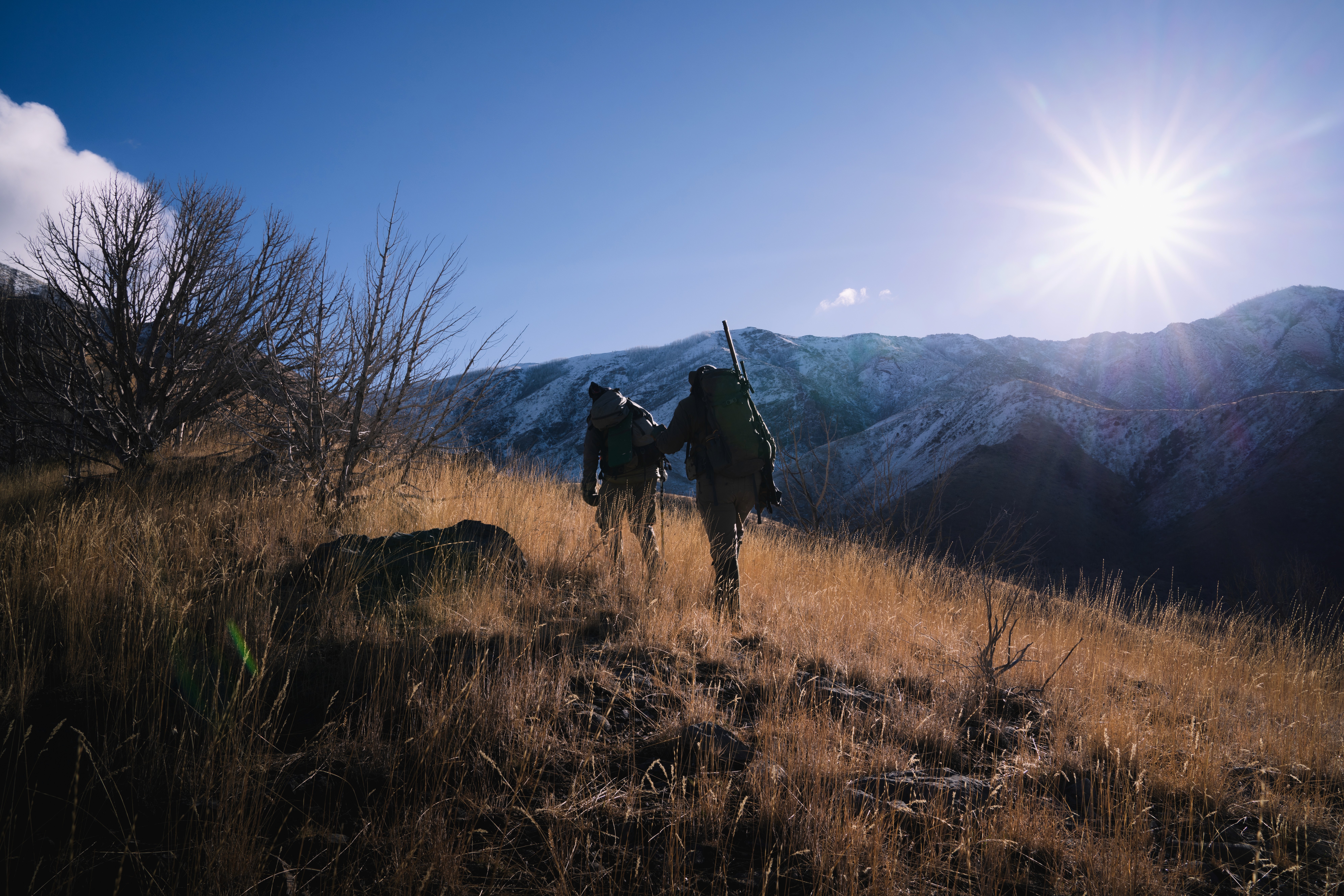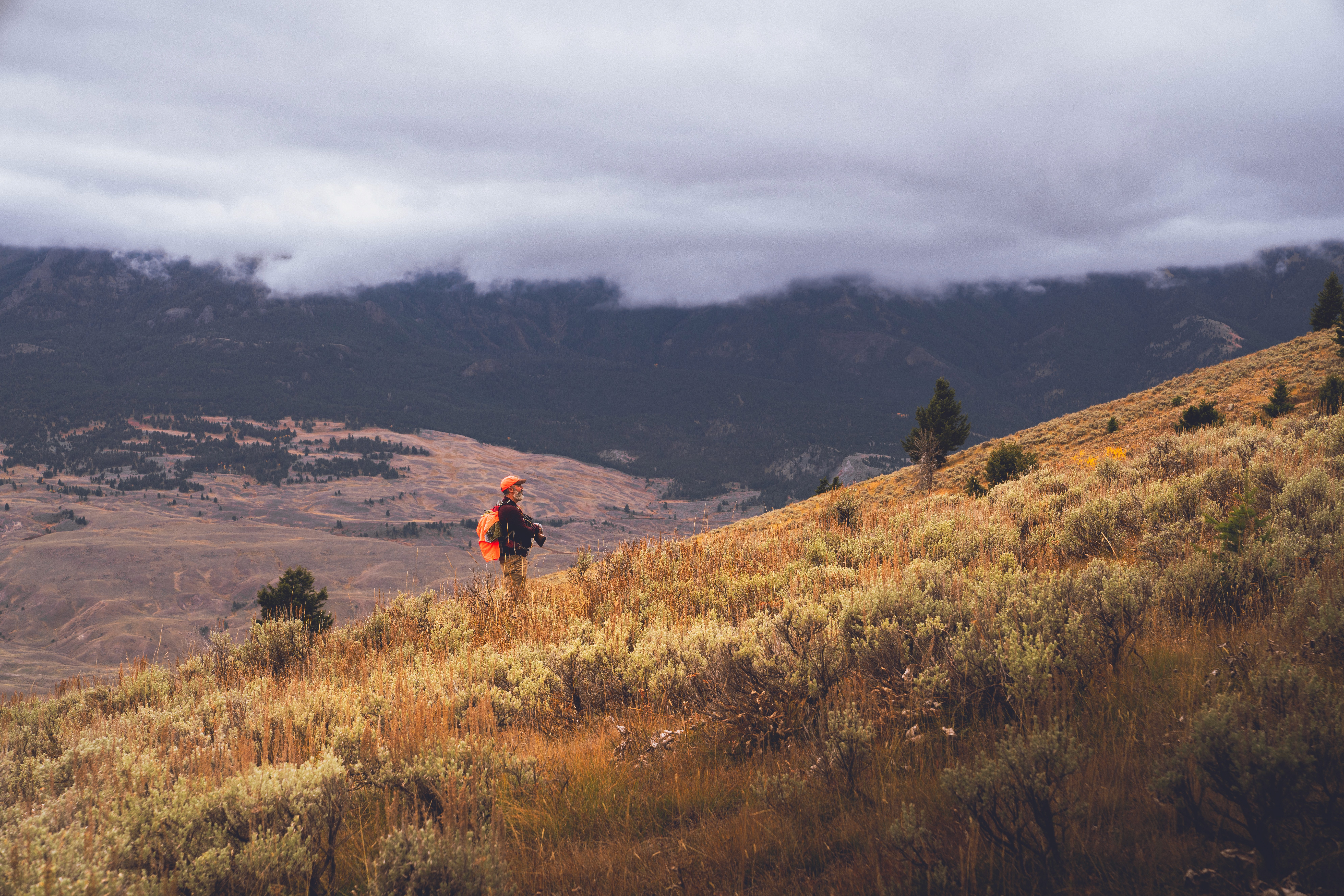



Nutrition & Wellness
How to Prevent & Address Exercise-Induced Muscle Cramps (Especially in the Field)
By: Jordan Wilcher
Exercise-induced muscle cramps can be a literal pain in the ass (or quad). Muscle cramps may seem like a simple problem at their core; a muscle seemingly stuck in the on position, like a light switch. But the individual mechanisms of muscle cramping are relatively complicated. The means of solving a stuck quad on the hill aren’t great unless you have planned ahead a bit. While there are a myriad of factors that can cause this unpleasant phenomenon, we will talk about a few theories specifically related to the exercise-induced variants. We will also discuss strategies to mitigate your risk, as well as strategies to fix cramps on the fly. In the absence of a plan, you may as well brace yourself for an arduous shuffle back to your truck. So, let’s give you a plan.
What Causes Exercise-Induced Muscle Cramps?
It was initially thought that cramping was as simple as a lack of hydration or salt. This theory was developed when scientists studied miners in hot environments. Later, it was discovered that telegraph operators also experienced cramping, and these were not people doing strenuous work in hot environments, losing a lot of fluid. So, what gives?
The factors affecting exercise-induced muscle cramping are controversial. Muscle cramps have been studied long before any of us reading this have been born, and different schools of thought outline several potential causes for exercise-induced muscle cramping in an otherwise healthy person with no underlying medical conditions. These include neuromuscular fatigue, multi-factor origin (yes, that is actually a theory), electrolyte imbalance, and dehydration.
The neuromuscular fatigue theory, in short, is that as a muscle gets stretched, the signal to contract can get stronger, while the signal to decrease contractions declines. It’s kind of like the gas pedal getting stuck and the brakes are nowhere to be found.
Multi-factor origin suggests a myriad of factors may lead to the phenomenon of cramping. This includes a mix of hydration, electrolyte imbalance, neuromuscular fatigue, muscle stiffness, and joint loading. Theories concerning dehydration include nerve compression and electrolyte imbalance caused by the lack of fluid.
It’s thought that electrolyte imbalance leads to muscle contraction dysfunction, which causes cramping.
The commonality, and problem, you will find in many of the recent studies is that none of them likely correlate directly with you. You aren’t a triathlete in cold weather, a D1 athlete playing a ball sport on a variety of surfaces, and you probably didn't time-travel to operate a telegraph. One thing from studies that we can likely apply to most people is that one of the most common factors indicative of future cramping is a prior history of muscle cramps.
Exercise-Induced Muscle Cramps are Individual
The reality is that we are all an N-of-1. You are your own science experiment, and factors involving your muscle cramps will likely be individual. This does not mean we cannot hedge against exercise-induced muscle cramps and even try to troubleshoot.
The first step is prevention, and that requires understanding. Knowing yourself is paramount; for example, I tend to get distal quadriceps cramping if I do have an issue. I don’t get debilitating cramps, but they do make locomotion, especially on downhills, more difficult. I have had this happen on a flat section during a 50k (extra sodium resolved the issue within 10-15 minutes), as well as long downhills, while chukar hunting.
When I have cramped on chukar hunts, I didn’t have large electrolyte or fluid loss, but have likely overstimulated muscular contraction. During my 50K, I replaced sodium at an appropriate rate determined by doing an actual sweat test to get my sodium concentration. I hadn’t beaten my quads to piss on a downhill (yet), and I had hydrated very well, exactly as I had done in training. The only thing I could think of was extra sodium. I pulled 500mg of capsules out of my vest, downed them, and I was right as rain. Was the sodium test wrong? What were the factors that led to this mild cramping in my distal right quad? Sodium replacement was the only thing that made sense to troubleshoot at the time, so I gave it a whirl. I took an extra 500mg during the race prior to a longer section without aid and opted for Skratch in addition to my PH1500 tabs at each subsequent aid station. I had no further cramping issues, even on the largely downhill back half of the race, where I figured I might cramp. Same cramp, different causes, different solution.
While understanding your proclivity to cramp, sweat rate, and sodium is important, my opinion is that the biggest hedge we can make against cramping is training. I say this because repeated effort is one of the few commonalities across the muscle cramp literature and my own personal experience with cramping.
Training is stress. Exercise, in the field, during a race, etc. is also stress. Our body adapts to tolerate the increase in stress when we give it the right ingredients. Training to avoid cramps in the field requires us to remember that we are each an N-of-1. Everyone is different. Your training must meet you where you are at. If you are fresh off the couch, start by slowly increasing the time you do repetitive movements, like high-rep lifting sets and marching downhill. Do this while increasing your general strength. If you have at least a moderate training history and no major strength or aerobic deficits, the land of muscular endurance training is where you can really galvanize yourself to the repeated contractions that can lead to cramping.
How to Hedge Against Exercise-Induced Muscle Cramps in the Field and During Training
So, how do we proceed to hedge against cramps?
I like to take a balanced approach. This means adequate hydration pre- and intra-session, sodium replacement, and carbohydrate fueling if warranted by the duration of effort.
Carbohydrate fueling is included because muscles like using carbohydrates during extended work, so ingesting them helps fight fatigue. And the less fatigued you become, the less likely you may be to cramp. Carbohydrate ingestion can also improve hydration status, so everything sort of shakes hands here. Most people can easily tolerate 60g of carbs per hour on extended sessions; you will have to experiment with this individually.
So what do we do when the wheels fall off and we start cramping? First is to consider your factors. I like to keep a few spare sodium caps with me. These are cheap, light, and don’t have a big downside unless you are doing something stupid, such as consuming an enormous amount of sodium per hour. Check out the website Precision Fuel and Hydration to get a rough estimate of your sodium loss. But know that sodium loss can range from as low as 400mg/liter to north of 2,000mg/liter. So, you need to know how much sodium is in whatever electrolyte replacement you use. (Precision, Scratch etc.)
Aside from sodium, I carry a lot of water while hunting with dogs. Typically, I run a 3L bladder and carry two 1L bottles. As the weather gets cooler, I don’t require as much, but I would rather have it and not need it; however, during Oct/Nov, if I have both dogs, we will usually go through most of my 5 liters during a hunt.
So, what if you’ve hydrated, taken in adequate carbohydrates and sodium, and you’re still cramping? Mechanical stretching can help break the cramp cycle. If that doesn’t help, the Hail Mary is a shot of something with high vinegar content, such as pickle juice shots. Sounds crazy, but there is some effect with vinegar that can overwhelm the nervous system and help break the cramp cycle. If you don’t believe me, the next time you have hiccups — involuntary contraction of the diaphragm — take a swig of vinegar. I learned this trick from my days working in the emergency room, where a patient at their wits' end from days of hiccups was magically healed with Heinz vinegar packets from the coffee cart. The disbelief and elation from that sequence of events never failed to deliver.
In summary, I am confident that if you take all of these factors into consideration, prepare, and train well, you can help to reduce your occurrence of muscle cramps.

Jordan was born and resides in Nevada. He is an assistant coach at Packmule in addition to working as an RN. Jordan has a curiosity which leads him to a constant pursuit of knowledge in his interests. He enjoys adventures with his family and anything that involves bird dogs or fly rods.
Recent posts
Related Articles

Fitness Tips
Dec 21, 2025
Honest Efforts: Don't Mail In Meaningful Work
Despite all of this, I think everyone can agree that training involves effort. Zoom out and look at what humans are physically capable of and it's really amazing what sustained effort in any direction leads to. Ballet dancers, endurance athletes, baseball players, F1 drivers - just a few of the many testaments to sustained effort over time. While most of us aren’t trying to be the next Ohtani or Verstappen, we can take one lesson with us - consistent effort drives outcomes.

Fitness Tips
Dec 21, 2025
Honest Efforts: Don't Mail In Meaningful Work
Despite all of this, I think everyone can agree that training involves effort. Zoom out and look at what humans are physically capable of and it's really amazing what sustained effort in any direction leads to. Ballet dancers, endurance athletes, baseball players, F1 drivers - just a few of the many testaments to sustained effort over time. While most of us aren’t trying to be the next Ohtani or Verstappen, we can take one lesson with us - consistent effort drives outcomes.

Fitness Tips
Dec 21, 2025
Honest Efforts: Don't Mail In Meaningful Work
Despite all of this, I think everyone can agree that training involves effort. Zoom out and look at what humans are physically capable of and it's really amazing what sustained effort in any direction leads to. Ballet dancers, endurance athletes, baseball players, F1 drivers - just a few of the many testaments to sustained effort over time. While most of us aren’t trying to be the next Ohtani or Verstappen, we can take one lesson with us - consistent effort drives outcomes.

Mountain Hunting
Dec 15, 2025
How to Test Your Uphill Muscular Endurance for Mountain Hunting
Mountain hunting is a lot of things. It’s an adventure and for many hunters it’s a rite of passage. It’s a challenge of skill, a test of will, and, oftentimes, an experience that at least borders the spiritual. It is also an endeavor that requires a huge amount of muscular endurance. It’s tough to build your uphill muscular endurance to the right levels without knowing where you currently stand and what kind of training will move the needle for you. So, let’s learn you up on how to test your uphill muscle endurance for mountain hunting.

Mountain Hunting
Dec 15, 2025
How to Test Your Uphill Muscular Endurance for Mountain Hunting
Mountain hunting is a lot of things. It’s an adventure and for many hunters it’s a rite of passage. It’s a challenge of skill, a test of will, and, oftentimes, an experience that at least borders the spiritual. It is also an endeavor that requires a huge amount of muscular endurance. It’s tough to build your uphill muscular endurance to the right levels without knowing where you currently stand and what kind of training will move the needle for you. So, let’s learn you up on how to test your uphill muscle endurance for mountain hunting.

Mountain Hunting
Dec 15, 2025
How to Test Your Uphill Muscular Endurance for Mountain Hunting
Mountain hunting is a lot of things. It’s an adventure and for many hunters it’s a rite of passage. It’s a challenge of skill, a test of will, and, oftentimes, an experience that at least borders the spiritual. It is also an endeavor that requires a huge amount of muscular endurance. It’s tough to build your uphill muscular endurance to the right levels without knowing where you currently stand and what kind of training will move the needle for you. So, let’s learn you up on how to test your uphill muscle endurance for mountain hunting.

Mountain Hunting
Dec 10, 2025
The Toughest Hunt on Earth: Himalayan Blue Sheep Expedition
“It’s truly an expedition. I’d even say it’s the purest hunt on earth.” This wasn’t the first time Trey Sperring and I had talked about hunting blue sheep in Nepal. It wasn’t even the second. The first was during our mutual friend and client, John Mark Prewitt’s, California Big Horn hunt in November 2024. Since then, we’ve texted about it, mentioned it on phone calls, and even discussed it during episode 74 of the Packmule Podcast. It is a conversational thread running through our friendship.

Mountain Hunting
Dec 10, 2025
The Toughest Hunt on Earth: Himalayan Blue Sheep Expedition
“It’s truly an expedition. I’d even say it’s the purest hunt on earth.” This wasn’t the first time Trey Sperring and I had talked about hunting blue sheep in Nepal. It wasn’t even the second. The first was during our mutual friend and client, John Mark Prewitt’s, California Big Horn hunt in November 2024. Since then, we’ve texted about it, mentioned it on phone calls, and even discussed it during episode 74 of the Packmule Podcast. It is a conversational thread running through our friendship.

Mountain Hunting
Dec 10, 2025
The Toughest Hunt on Earth: Himalayan Blue Sheep Expedition
“It’s truly an expedition. I’d even say it’s the purest hunt on earth.” This wasn’t the first time Trey Sperring and I had talked about hunting blue sheep in Nepal. It wasn’t even the second. The first was during our mutual friend and client, John Mark Prewitt’s, California Big Horn hunt in November 2024. Since then, we’ve texted about it, mentioned it on phone calls, and even discussed it during episode 74 of the Packmule Podcast. It is a conversational thread running through our friendship.

Fitness Tips
Dec 21, 2025
Honest Efforts: Don't Mail In Meaningful Work
Despite all of this, I think everyone can agree that training involves effort. Zoom out and look at what humans are physically capable of and it's really amazing what sustained effort in any direction leads to. Ballet dancers, endurance athletes, baseball players, F1 drivers - just a few of the many testaments to sustained effort over time. While most of us aren’t trying to be the next Ohtani or Verstappen, we can take one lesson with us - consistent effort drives outcomes.

Mountain Hunting
Dec 15, 2025
How to Test Your Uphill Muscular Endurance for Mountain Hunting
Mountain hunting is a lot of things. It’s an adventure and for many hunters it’s a rite of passage. It’s a challenge of skill, a test of will, and, oftentimes, an experience that at least borders the spiritual. It is also an endeavor that requires a huge amount of muscular endurance. It’s tough to build your uphill muscular endurance to the right levels without knowing where you currently stand and what kind of training will move the needle for you. So, let’s learn you up on how to test your uphill muscle endurance for mountain hunting.


